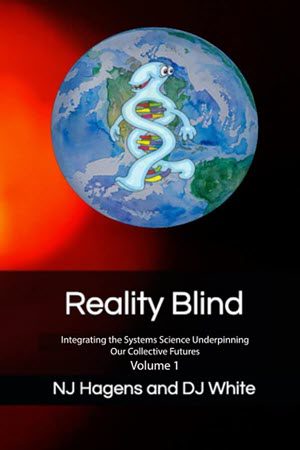Forget the partisan hype, Aust farmers are preparing for the extremes of climate change
by Jamie Seidel in Cosmos Magazine…Farmers consider the animal breeds and crop types they produce to be flexible choices. Others are prepared to relocate operations to chase the conditions their particular produce needs.
Pivotal moment for humanity as disasters threaten to converge
by David Nield in Science Alert…The researchers warn of a catastrophic loss of crop-growing capacity with up to half the global area for growing wheat and maize potentially lost, putting the “stability of our societies” under threat. These processes are already well underway, with more than 27 million children driven into hunger by extreme weather in 2022 alone.
What a major solar storm could do to our planet
by Kathryn Schulz in The New Yorker…Scientists can’t predict what will happen in space. All they can do is try to identify a threat quickly enough to minimize its impact on everything that it might damage or destroy.
Systemic wisdom for and beyond systems change – A critical systems perspective convening not only indigenous traditions of wisdom
by Louis Klein in EUSG.org…Systemic wisdom facilitates the re-entry of trust and love into science. And though this challenges the modern worldviews and the contemporary self-perception of sciences, it allows for translating knowing into understanding and knowledge into wisdom. We may lose the option of heroic systems change, yet we gain the possibility to realise a humanising society embedded in systemic wisdom.
Rebecca Solnit: Slow Change Can Be Radical Change
by Rebecca Solnit…..We are impatient creatures, impatient for the future to arrive and prone to forgetting the past in our urgency to have it all now.

Redefining philanthropy for global collective resilience: Embracing the polycrisis paradigm
Connecting people, north and south, and convening conversations to share approaches, practices and learnings is vital to inspire and to harness the real potential value for all of our philanthropic contributions. Read full article on...
Towards multivalent currencies, bioregional monetary stewardship and a distributed global reserve currency
from Dark Matter Labs.org…Ultimately we hope to convene a community who have diverse skills and experiences beyond our own; a distributed team united in designing and building the alternative monetary system that we so desperately require. A first step towards that is to think carefully about what a desirable monetary system might in fact contain.
Critical Atlantic Ocean current system is showing early signs of collapse, prompting warning from scientists
by Laura Paddison on CNN….For decades, scientists have been sounding the alarm on the circulation’s stability as climate change warms the ocean and melts ice, disrupting the balance of heat and salt that determines the currents’ strength.
The perverse policies that fuel wildfires
by Elizabeth Kolbert in The New Yorker…Strategies intended to safeguard forests and homes have instead increased the likelihood that they’ll burn.
Crazy Town: Episode 74. Prepping for the apocalypse: Elites’ foolish fantasies for surviving a collapse of their own creation
by Asher Miller, et al., in podcast Crazy Town: Meet Barrett Moore, the bunker-building bullshit artist who helps capitalists survive the apocalypse with beans, bullets, and bravado. Please share this episode with your friends and start a conversation.
Hurricanes becoming so strong that new category needed, study says
by Oliver Milman in The Guardian…Scientists propose new category 6 rating to classify ‘mega-hurricanes’, becoming more likely due to climate crisis
The Seven Shifts
in Horizon 2045…We safeguard the wellbeing—and the promise—
of future generations.
We realign our human experience around propelling humanity forward

Reality Blind
by Nate Hagens Reductionism is quite useful, but both dangerous
and insufficient. A science-based worldview which looks at all the
puzzle pieces at once can make sense of things. The important
knowledge now resides between the disciplines.
Intertwined and interconnected: Can you discern?
by Janet Harvey in Invite Change.com ..Have you ever wondered about the intricate web of influences that shape your business? Are your leaders equipped with the necessary discernment and systemic thinking to navigate today’s complex landscape? In this blog, I uncover these interwoven and interconnected forces. Explore this critical topic and delve into the importance of preparedness in the face of these interconnected dynamics.
The AI age begins
by Peter Leyden in The Great Progression….The beginning of a step change in human capabilities as well as a new season of events and media coming out of ground zero San Francisco

Global collaboration of scientists needed to solve polycrisis
in Cambridge University Press….“Above all else, the polycrisis concept emphasises that crises interact with one another in highly consequential ways that are grossly underappreciated by academic and policymaking institutions that study those crises individually, in separate silos.”

